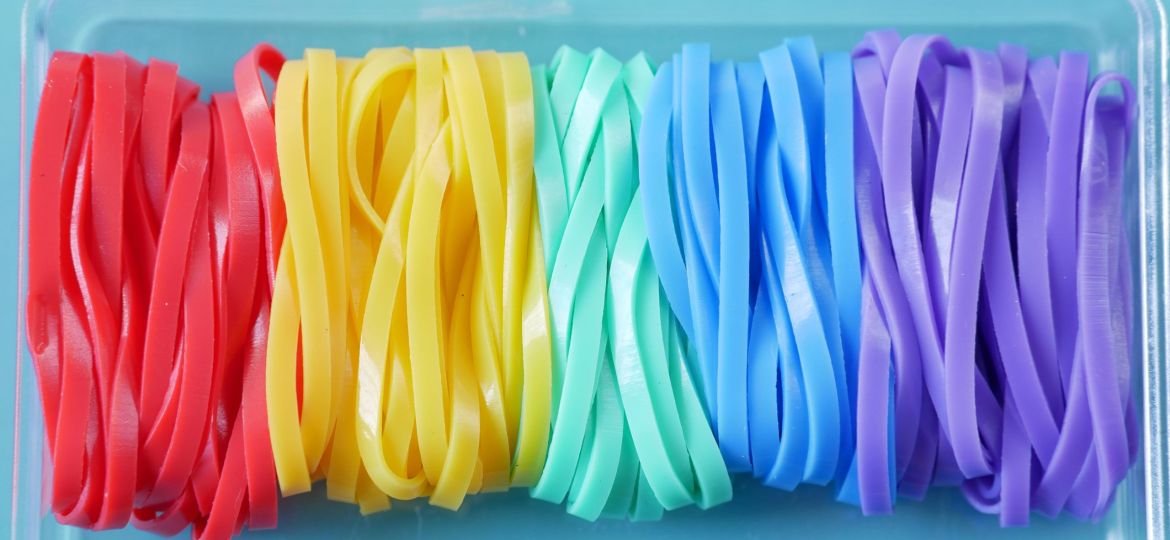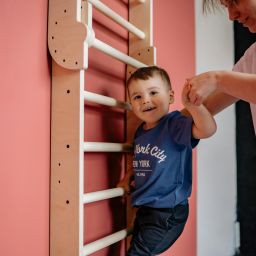
FH Summary: Discover the transformative power of the rubber band metaphor for childhood development with First Habits, where we delve into the profound impact of instilling positive habits in children. Through gentle guidance and practical strategies, parents can foster an upward spiral of growth and resilience, shaping a future filled with limitless possibilities. Join us on this journey to unlock the full potential within every child, one habit at a time.
Welcome to First Habits, where we’re dedicated to empowering parents with the knowledge and tools to nurture their children’s growth and development. Today, we’re diving deeper into the fascinating concept of the rubber band metaphor for childhood development, an area previously covered in this post. This is one of the key concepts that lie at the heart of our mission at First Habits.
Understanding the Rubber Band Metaphor
JoAnn Deak, in her insightful exploration of childhood development, likens each ability of a child to a rubber band in need of stretching. Just as a rubber band can expand its reach with gentle tension, Deak suggests that children’s abilities can grow and flourish when appropriately challenged.
Imagine a rubber band: flexible, resilient, and capable of stretching far beyond its original form. Similarly, children possess incredible elasticity, able to expand their capabilities and potentials through the habits we instill in them. Just as stretching a rubber band requires gentle yet consistent effort, fostering positive habits in children lays the foundation for their growth and success.
Dr. Deak emphasizes the importance of providing children with opportunities to stretch their comfort zones, fostering resilience, adaptability, and a growth mindset. Think of each of your child’s abilities as an individual rubber band. Some rubber bands (aka abilities) may be less developed and weaker than others, some may be stronger and more flexible. By thinking about each ability as a separate rubber band you are able to provide the right developmental cues to positively stretch your child’s abilities and push them past their seemingly fixed boundaries. Like a rubber band, it’s going to take consistent effort and gentle nudges rather than an all-at-once type of intervention which will cause the rubber band to snap rather than grow and strengthen.
Through this metaphor, Deak highlights the transformative potential of encouraging children to push past their perceived limits and embrace new experiences, ultimately unlocking their full potential.
JoAnn Deak popularized the rubber band metaphor as a way to think about a child’s developing brain. Here is her beautiful summary of the concept in her children’s book Your Fantastic Elastic Brain:
Did you know you can stretch and grow your own brain? Or that making mistakes is one of the best ways your brain learns? Just like how lifting weights helps your muscles get stronger, trying new things without giving up – like finding the courage to put your face in the water the first you’re at a pool – strengthens your brain. Next time, your brain will remind you that you overcame that fear, and you will be braver.
At First Habits, we believe in the power of habits to shape a child’s trajectory. Research and common sense support this notion, emphasizing that developing good habits creates an upward spiral in a child’s life.
The Upward Spiral of Good Habits
Good habits serve as the building blocks of a child’s journey towards excellence. At First Habits, we advocate for cultivating habits that form elevated foundations of childhood development. From empathy and resilience to curiosity and gratitude, these habits not only shape character but also empower children to navigate life’s challenges with confidence and grace.
Research conducted by leading experts in child development underscores the profound impact of habits on a child’s well-being. At First Habits, we recognize the critical role of habits in fostering positive youth development within the social contexts of family, school, and community organizations. According to Lerner (2009),1 positive youth development is a transformative process centered around promoting the “5Cs”: competence, confidence, connection, character, and caring. Competence encompasses the ability to navigate life’s challenges with skill and resilience, while confidence reflects a positive belief in one’s capabilities.
Moreover, fostering meaningful connections with family, peers, and communities is essential for nurturing healthy relationships and social bonds. Character development involves instilling values and standards of behavior that promote positive social functioning and contribute to a thriving society. Lastly, caring underscores the importance of empathy and compassion towards others, fostering a sense of community and belonging.
As you can see, each of these concepts fit squarely within our base and three pillar framework that we focus on at First Habits.
At First Habits, we advocate for a strength-based approach to youth development, emphasizing the cultivation of positive qualities and habits rather than solely focusing on risk reduction. By instilling positive habits early on, we create a foundation for children to thrive, actively nurturing their growth and development.
Integrating First Habits into Daily Life
Let’s explore practical ways to integrate First Habits into your child’s daily routine and in doing so stretch the rubber band that effectively is each of their capabilities and talents:
Morning Mindfulness: Start the day with a moment of mindfulness. Encourage your child to take deep breaths, express gratitude, and set positive intentions for the day ahead. This simple practice fosters self-awareness and cultivates a positive mindset.
Family Bonding Time: Dedicate regular time for meaningful family activities. Whether it’s cooking together, playing games, or engaging in outdoor adventures, these moments strengthen familial bonds and promote empathy and communication skills.
Chores as Responsibilities: Assign age-appropriate chores to your child, emphasizing their role in contributing to the household. By taking ownership of tasks like tidying their room or helping with meal preparation, children learn responsibility and develop a strong work ethic.
Reading Rituals: Establish a nightly reading ritual before bedtime. Encourage your child to explore a variety of books and stories, fostering a love for learning and expanding their imagination.
Reflective Journals: Introduce the practice of keeping a reflective journal. Encourage your child to write down their thoughts, feelings, and experiences, promoting self-reflection and emotional intelligence.
Bringing the Rubber Band Metaphor to Life
Let’s delve deeper into Emily’s journey – a poignant example of the transformative power of fostering positive habits in children. Born with a naturally reserved disposition, Emily often found herself hesitant to step outside her comfort zone. However, with unwavering support and encouragement from her parents, she embarked on a journey of self-discovery.
Initially, the prospect of trying new things filled Emily with apprehension. Yet, guided by her parents’ gentle nudges and reassuring words, she mustered the courage to take those first tentative steps. Each new experience became an opportunity for growth, as Emily gradually expanded her horizons and embraced unfamiliar challenges.
As Emily ventured beyond her comfort zone, her confidence blossomed like a flower in bloom. She discovered talents and strengths she never knew she possessed, surprising herself and those around her with her newfound capabilities. With each accomplishment, Emily’s sense of self-assurance soared, propelling her forward on a path of personal growth and empowerment.
Today, Emily stands tall as a testament to the principles of First Habits. She approaches life’s obstacles with resilience and determination, armed with the knowledge that every challenge is an opportunity for growth. Through her journey, Emily embodies the transformative potential of cultivating positive habits, inspiring others to embark on their own paths of self-discovery and growth.
Conclusion
As parents, we hold the power to shape our children’s futures through the habits we instill in them. By understanding and harnessing the principles of the rubber band metaphor, we can guide our children towards a path of growth, resilience, and fulfillment. At First Habits, we’re committed to supporting parents on this journey, providing valuable resources and insights to optimize their children’s development.
For more information on habits to focus on with your children and how to implement them, visit more entries on our First Habits blog and sign up for our weekly newsletter. Together, let’s stretch the boundaries of possibility and unlock the full potential within every child.
References:
1 Lerner, Richard M., et al. “The positive youth development perspective: theoretical and empirical bases of a strengths-based approach to adolescent development.” Oxford Handbook of Positive Psychology
















